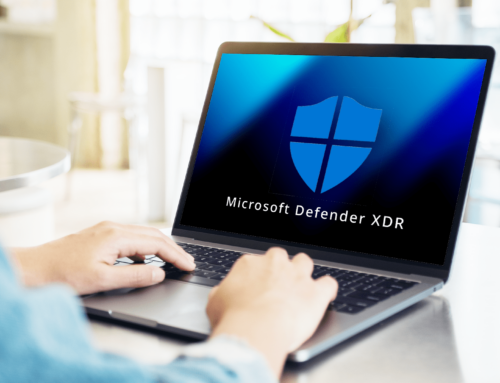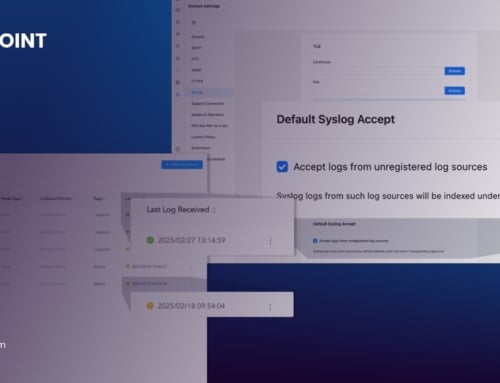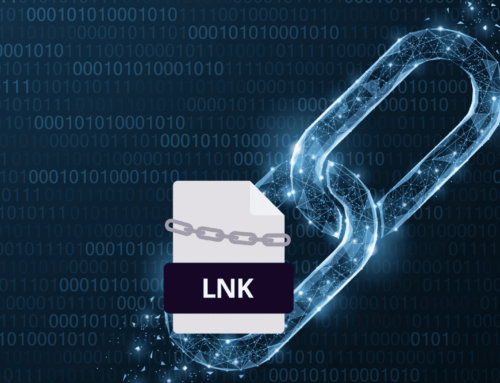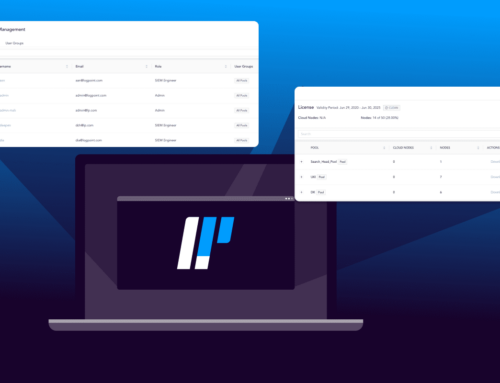In the quest of increasing their security posture, organizations tend to think that security operations platforms are the cornerstone. However, the security of any business is only as strong as its SOC team. Therefore, both business and security executives must consider the SOC’s experience with each cybersecurity tool (SIEM, SOAR, UEBA etc.) before opting for any vendor’s offering.
This was clear when, in their predictions for 2022, Gartner addressed the concept of consolidating security platforms as an upcoming trend. One could see that the value of this strategy was beyond business criteria and that behind a consolidated platform, there are also many reasons related to a better SOC experience.
In the current landscape of the security operations platform, terms such as “intuitive” or “easy to use” are a common denominator. However, these are often confused with Graphical User Interfaces, or GUIs, as happens in IBM QRadar. With this platform, there’s always that feeling of disjointed user interfaces that begs the question: Is QRadar really an easy-to-use, truly consolidated platform?

Go To Section
One platform doesn’t always equal one experience
Popular opinion suggests that a consolidated platform's main benefit is the tech stack's consolidation. However, the most important advantage is that all data, and products, are integrated in a streamlined way that empowers both data orchestration and the analyst’s user experience. This though seems to be easier said than done when it comes to IBM QRadar.
Although one of its benefits is a so-called “unified analyst experience”, it's obvious that it doesn’t offer a fully consolidated platform from that perspective. For starters, QRadar’s GUI must be installed separately, but that’s the tip of the iceberg. This becomes more obvious when it gets to SOAR.
Drilling down, the SOAR solution can become an adventure as QRadar seems to have multiple platforms for running SOAR. For example, users, log sources or even the alerts need to be configured both within the SIEM and SOAR respectively. Analysts end up having different experiences depending on the product they are using.
Do you want to see how well SIEM, SOAR, and UEBA are integrated into Logpoint? Check this video.
Ease of use must extend to data normalization too
For IBM, QRadar’s unified analyst experience translates into more efficiency. But it takes one look into their dashboard, alert creation, and reporting tools to realize that this principle is not applicable throughout the entirety of the platform.
The limited number of built-in dashboards is further inhibited by a complex process to create new ones – to compound this even more, it is more difficult still if we discuss dashboards with drill-down functionality. In addition, the reporting engine doesn’t make it easy to generate normal reports, let alone develop analytical reports.
While QRadar can be a fantastic operational monitoring platform, reading data from a screen is not enough, especially when the SOC team needs to collaborate with other departments, such as compliance.
Working in large environments can be expensive
Difficulty in creating alerts and reports can hinder SOC efficiency, which comes at a cost for the organization. And this is especially true in QRadar for MSSPs with multi-tenant environments.
With IBM’s solution there’s the ability to create tenants and under them create log sources for each of the customers. That seems to be easy, but the issue comes when it’s time to create tenant-specific alerts and dashboards. It requires a lot of manual work and copies of rules that must be made domain specific.
Moreover, this stiffness can also be found in the licensing of SOAR. In QRadar customers pay for authorized users and there’s no free seat included in the license. For MSPPs or large organizations that work with consultants that handle both monitoring and response, the price of SOAR can be too steeped because QRadar’s licensing is not concurrent but based on authorized users.
The result of this means MSSPs should think twice before opting for QRadar. They can end up paying for seats that are not always used or see their SOC’s resources being spent on manual work to achieve full multi-tenancy – in other words, they will see an increase in the total cost of ownership.
How Logpoint stacks up against QRadar
There’s no doubt that QRadar is an outstanding tool, but it also comes with its own limitations. Among all of them, there are three main aspects in which Logpoint is a better option to deliver better security: enhanced experience, lower TCO, and true consolidation.
Improving the analyst experience
In contrast to IBM QRadar, Logpoint Converged SIEM does offer a fully streamlined and unified experience. All our products are built on the same platform, allowing companies to have full integration of data from endpoints, SIEM, SOAR, UEBA, and even business-critical applications like SAP.
In addition, the GUI is consistent across the various components of the platform and is upgraded with the updates on the product, not separately as with QRadar. With a centralized overview, analysts have threat hunting, threat detection, incident response, compliance, and operations monitoring, all at their fingertips, and all in one platform.
Reducing the total cost of ownership
An easy-to-use platform generally requires less training and, therefore, few resources. In contrast, QRadar has a complex way of creating dashboards with drill-down functionality, alert rules, and reports.
In addition, Logpoint’s query language is far less complicated than QRadar’s in terms of syntax and semantics. All in all, with Logpoint, the learning curve decreases and translates into a lower total cost of ownership and short time to value.
For MSSPs and organizations with many users, SOAR is still a viable option. In contrast to QRadar, where you have to pay for authorized users, the Converged SIEM license comes with a free SOAR seat that can be used for concurrent access – and in case they need more, companies can easily add more SOAR licenses.
Converged SIEM is a synonym for consolidation
SIEM and SOAR are the most visible examples of true consolidation in Converged SIEM. But behind the scenes, analysts can also reap the benefits of other products, such as UEBA, and shorten the time to value. Contrary to QRadar, which only offers user behavior analytics, Logpoint detects abnormal behavior in both users and entities.
When it comes to endpoint security, Logpoint is again a better choice. AgentX, Lopgoint’s native endpoint agent, comes at no cost. It collects log data from Windows and Linux also providing responses, whereas QRadar relies on third-party solutions to do the latter. In addition, AgentX runs constant policy checks based on Critical Security Controls, looking for more than malware, which is not available in QRadar. As it enriches SIEM intelligence with contextual information from the endpoints, analysts can see more.
Ultimately, the most important thing is to find the solution that best fits your company’s needs. However, thinking of the needs of the SOC team will always pay off. As they become more efficient, the mean time to respond will decrease. If you want to start securing your organization with a truly consolidated security operations platform, you can always reach out to our team. They’ll be happy to show you how Logpoint Converged SIEM works.






